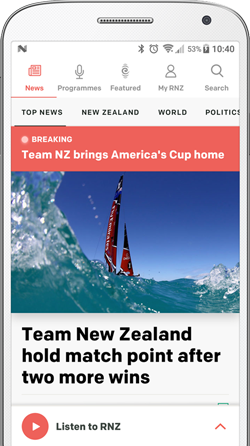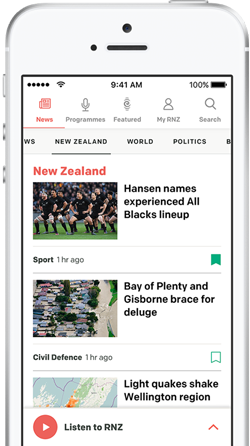
The speed limit on the State Highway 35 section from Makorori to Pouawa will increase from 80km/h to 100km/h following public consultation, which revealed that 41 percent of respondents out of 864 responses supported keeping the current limit. Photo: LDR / Zita Campbell
Raising the speed limit on a stretch of State Highway 35 back to 100km/h has been labelled "unsafe" and "ridiculous" by opponents of the move.
The speed limit was reduced to 80km/h in September 2020 and evidence gathered by Gisborne District Council revealed a big reduction in crashes since.
A Makorori woman said residents had been "terrified for our lives" when the limit was previously 100km/h; Gisborne Cycling Club described the speed change as an "unpleasant surprise"; and a Gisborne Boardriders Club member said "the higher the speed, the higher the risk".
The speed limit for the section of SH35 from Makorori to Pouawa will be increased following public consultation, which revealed that of the 864 responses, 41 percent supported keeping the current speed limit.
On 29 January 2025, the Minister of Transport confirmed this stretch of state highway, with 48 other sections, was open to community consultation under the Setting of Speed Limits Rule 2024.
New Zealand Transport Agency (NZTA) ran the consultation from 30 January to 13 March.
Speeds could remain at current limits if there was significant public support.
However, 53 percent "strongly opposed" retaining the current limit, and 6 percent "slightly opposed", according to NZTA data.
Of the 41 percent who supported retaining speeds, NZTA found 39 percent "strongly supported" it, 1 percent "slightly supported" and 1 percent were "neutral".

NZTA data summary on Gisborne Consultation for the State Highway 35 section from Makorori to Pouawa on whether to retain the current speed limit of 80km/h or increase to its previous speed limit of 100km/h. Photo: LDR / New Zealand Herald
Many residents spoke to Local Democracy Reporting about the move, calling the increase "not appropriate" and pointing to numerous warning signs cautioning about a high-crash zone.
Hans Van Kregten, president of Gisborne Cycling Club, said the club submitted a detailed proposal on behalf of its members and local cyclists.
However, the submission only counted as one.
"We represent a club, but we also represent a cycling community, so it is more than one."
Van Kregten said it appeared a lot of people supported the increase in the speed limit.
However, the club viewed the increase as "not appropriate" along Makorori and Tatapouri - both major beaches in the region.
Van Kregten said there were "lots of activities between the road and the sea ... it's a scenic, touristy type of environment".
The road was also quite windy, with numerous warning signs saying "Slow Down" and "High Crash Area".

Gisborne Cycling Club has group and individual riders who ride in that area.
"Increasing the speed limit will make us feel a lot more unsafe," van Kregten said.
Gisborne Boardriders Club surfing development manager Flo Bub said the increase could affect the surfing community.
"We have seen crashes along that stretch before, especially in the early mornings when a lot of surfers are looking for waves and the sun is low coming over the hill.
Bub said depending on the surf, carparks could get busy with vehicles going in and out at Makorori and other surf spots.
"Around any competitions or events, there are more people and limited parking ... it can be challenging.
"The higher the speed, the higher the risk," he said.
"Heaps of families utilise and enjoy the beach. Having it [the speed limit] at 80 is a lot better and less risky."
He was not sure if anyone from the surfing community submitted to the consultation.
The busiest time of year was the summer months and sometimes people were not aware or did not take the time; consultation could be hit or miss, he said.
"We can do better as a community and submit."
Former Gisborne Mayor Meng Foon, who owns Tatapouri Bay Oceanside Accommodation with wife Ying , said the current speed limit was good and safe for campers.
"NZTA has put in an entry lane for us and other users, and this has created a safer passage. Therefore, 80km/h is the right speed," Foon said.
He said he had asked NZTA for a speed camera on the Tatapouri Hill, as many people sped, and there had been many accidents and some fatalities.
"Many vehicles pull in and out for surfing, gatherings, seafood, camping and enjoying the beach.
"We do get many tourists on the stretch of road. Many are not familiar with the windy area, so maintaining the current 80km/h is what I recommend."
In March, Local Democracy Reporting received an email thread between a resident and Gisborne District Council asset planning manager Tina Middlemiss, who had gathered data from NZTA's Crash Analysis System (CAS).
There was a 64 percent reduction in crashes from the five years before to the five years after the speed limit was reduced from 100 to 80km/h on 8 September 2020, for the stretch of road that underwent consultation, Middlemiss wrote.
"So by increasing the speed limit from 80 back up to 100km/h, it would reason that there would be almost triple the risk of crashes and harm occurring."
Minister of Transport Chris Bishop's office was approached for comment on whether this data was factored into the decision to reverse the speed limit back to 100km/h.
The question was deferred to NZTA.
NZTA director of regional relationships Linda Stewart said under the rule, NZTA was required to undertake consultation to demonstrate "public acceptance", defined as majority public support. This was the only factor NZTA could take into account in its decision-making.
"NZTA was required to measure levels of public support, and no greater weighting was able to be assigned to different types of road users," Stewart said.
"The rule is clear that 'all persons who use the road, including freight' should be included in the consultation, alongside local communities, businesses, schools, councils and iwi.
"For a full speed review in the future, as we have always done in the past, themes from both the local community and key stakeholders from consultation will be considered alongside safety and technical data, including a cost-benefit disclosure statement, to help inform decision-making.
"Safety remains a key priority for NZTA and is a factor in decision-making around road design, layout, modifications and speed."
Makorori resident Margaret Hansen said she did not know of anyone in her community who wanted the increase.
"We've all been terrified for our lives pulling out of there when it was 100km/h."
Hansen said she and her community could not understand it. Makorori and Tatapouri hills had both had fatalities, "head-on collisions with logging trucks".
"The number of fatalities was enough to prompt those huge signs, which say 'Slow Down' or 'High Crash Area'," she said.
"They've been there for a number of years - before the speed limit was reduced [to 80km/h]. So it seems ridiculous to increase the speed where the sign says 'Slow Down' ... the logging trucks still exist."
Hansen said at the Makorori settlement's Y intersection, residents had about a four-second window of visibility and had to look behind their shoulder at the oncoming traffic coming over Tatapouri hill.
"At 100km/h, we would have about three seconds.
"If there is a logging truck coming down at 100km/h and you've pulled out, [and] you can't see them... there's nowhere to pull back in again.
"That's just the absolute nightmare."
LDR is local body journalism co-funded by RNZ and NZ On Air.







